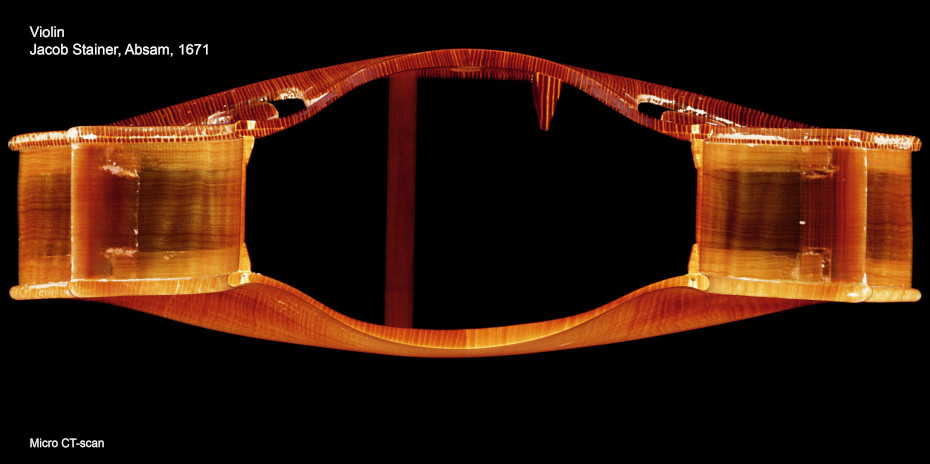Back
The back plate of the violin’s body is the counterpart of the front plate or belly. It is generally made of maple, or, in the case of cellos, often of poplar wood. Flamed (figured) wood is preferred for its beautiful appearance. Varnish brings out the lively grain of this wood. Flaming is mostly bookmatched (symmetrical) on two-piece backs. Occasionally, string instruments are made with one-piece backs; the choice of a one- or a two-piece back makes no difference to tone, however. The first step in shaping a back (or a top) plate is designing the outline. Then, the arching is carved and the inside is hollowed out. Hollowing, or thicknessing, is decisive in determining the acoustical response of the back. Only proper thicknessing of the back will give the instrument a superior sound quality. A CT scan of the violin crafted by Jacob Stainer (born in Absam, Tyrol, around 1618) shows that the cheeks have a far lower thickness than the middle of the back plate. By contrast, the belly has an almost uniform thickness throughout. At the upper end of the back plate, the button on the back connects to the bottom of the neck.

